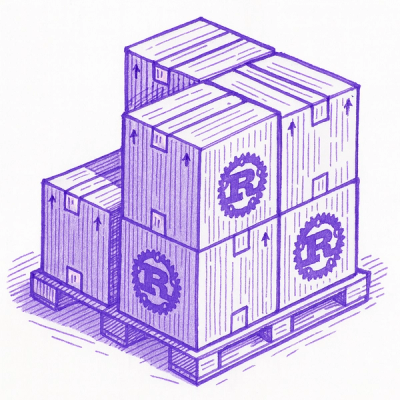
Security News
Crates.io Implements Trusted Publishing Support
Crates.io adds Trusted Publishing support, enabling secure GitHub Actions-based crate releases without long-lived API tokens.
@teamthread/elm-web-components
Advanced tools
A small JavaScript package to let you wrap your Elm applications up in a web component.
yarn add @teamthread/elm-web-components
Given the following Elm app:
module Main exposing (..)
import Html exposing (text, Html)
type Msg
= NoOp
type alias Model =
{ name : String
}
update : Msg -> Model -> ( Model, Cmd Msg )
update msg model =
( model, Cmd.none )
view : Model -> Html Msg
view model =
text ("Hello world, my name is: " ++ model.name)
type alias Flags =
{ name : String }
init : Flags -> ( Model, Cmd Msg )
init flags =
( Model flags.name, Cmd.none )
main : Program Flags Model Msg
main =
Html.programWithFlags
{ init = init, update = update, subscriptions = \_ -> Sub.none, view = view }
You can create a custom web element that will render it like so:
import elmWebComponents from '@teamthread/elm-web-components'
import ElmApp from './Main.elm'
elmWebComponents.register('demo-elm-component', ElmApp.Main)
And now in your HTML you can use the component:
<demo-elm-component name="Jack"></demo-elm-component>
Any attributes are passed into your Elm app as Flags, so make sure you use programWithFlags if you care about them. If you don't you can just use Html.program as you would normally.
You can also hook up a component that uses ports. The third argument to elmWebComponents.register is an object that can take a function that will be called with the ports object that Elm provides, so you can then hook into it and subscribe and send to them as you would normally:
elmWebComponents.register('component-with-ports', ComponentWithPorts, {
setupPorts: ports => {
ports.somePort.send(1)
ports.someOtherPort.subscribe(data => {
// deal with port here
})
},
})
Sometimes you will want to pass in flags not only via HTML attributes, but from JavaScript. The third argument to elmWebComponents.register takes a staticFlags object which will be passed in:
elmWebComponents.register('component-with-ports', ComponentWithPorts, {
setupPorts: ports => {},
staticFlags: {
someCustomProp: 'foo',
},
})
Now, rendering the component like so:
<component-with-ports name="Jack"></component-with-ports>
onDetached (new in 0.3.0)If you need to do some work when the Elm component is removed from the DOM, you can now pass onDetached: () => ... as another option:
elmWebComponents.register('component-with-ports', ComponentWithPorts, {
setupPorts: ports => {},
staticFlags: {
someCustomProp: 'foo',
},
onDetached: () => {
console.log('Called when the component is removed from the DOM')
}
})
This is useful for tidying up any event listeners you might have.
You can find full examples in the example directory. If you have cloned the repository, you can run yarn run example to run them locally.
v0.3.0 [3 May 2018]
onDetached as an option. This is a callback function that will be run when component is removed from the DOM.v0.2.0 [1 May 2018]
staticFlags option.register now takes an object with two (optional) properties: setupPorts and staticFlags, rather than just a function for setting up the ports.FAQs
Run your Elm apps through web components.
The npm package @teamthread/elm-web-components receives a total of 992 weekly downloads. As such, @teamthread/elm-web-components popularity was classified as not popular.
We found that @teamthread/elm-web-components demonstrated a not healthy version release cadence and project activity because the last version was released a year ago. It has 4 open source maintainers collaborating on the project.
Did you know?

Socket for GitHub automatically highlights issues in each pull request and monitors the health of all your open source dependencies. Discover the contents of your packages and block harmful activity before you install or update your dependencies.

Security News
Crates.io adds Trusted Publishing support, enabling secure GitHub Actions-based crate releases without long-lived API tokens.

Research
/Security News
Undocumented protestware found in 28 npm packages disrupts UI for Russian-language users visiting Russian and Belarusian domains.

Research
/Security News
North Korean threat actors deploy 67 malicious npm packages using the newly discovered XORIndex malware loader.